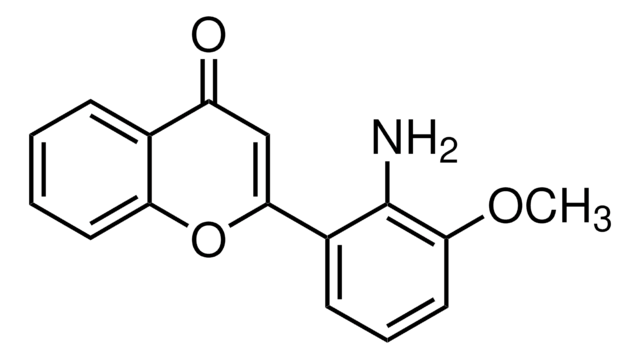T2663
Trizma® hydrochloride solution
1 M, BioReagent, for molecular biology
Synonym(s):
Tris hydrochloride solution
Sign Into View Organizational & Contract Pricing
All Photos(1)
About This Item
Recommended Products
grade
for molecular biology
for molecular biology
Quality Level
sterility
0.2 μm filtered
product line
BioReagent
form
solution
concentration
1 M
impurities
DNase, RNase, NICKase and protease, none detected
pH
7.35-7.45
SMILES string
Cl.NC(CO)(CO)CO
InChI
1S/C4H11NO3.ClH/c5-4(1-6,2-7)3-8;/h6-8H,1-3,5H2;1H
InChI key
QKNYBSVHEMOAJP-UHFFFAOYSA-N
Looking for similar products? Visit Product Comparison Guide
General description
Trizma® hydrochloride solution is a useful biological buffer.
Application
Trizma® hydrochloride along with Trizma-base is used to prepare buffer solutions of pH 7.35. It was used to prepare the triton extract. It may be used in the analysis of protease activity, isolated from the Bacillus stearothermophilus and Bacillus subtilis. It may be employed as buffer for the restriction fragment analysis of genomic DNA isolated from the enterococcal isolates and Escherichia coli.
The pH values of all buffers are temperature and concentration dependent. For Tris buffers, pH increases about 0.03 unit per degree C decrease in temperature, and decreases 0.03-0.05 unit per ten-fold dilution.
For precise applications, use a carefully calibrated pH meter with a glass/calomel combination electrode.
For precise applications, use a carefully calibrated pH meter with a glass/calomel combination electrode.
Other Notes
Prepared with pH-adjusted Biotechnology Performance Certified Trizma Base in 18 megohm water and 0.2 μm filtered.
Legal Information
Trizma is a registered trademark of Merck KGaA, Darmstadt, Germany
Storage Class Code
10 - Combustible liquids
WGK
WGK 2
Flash Point(F)
Not applicable
Flash Point(C)
Not applicable
Personal Protective Equipment
dust mask type N95 (US), Eyeshields, Gloves
Choose from one of the most recent versions:
Already Own This Product?
Find documentation for the products that you have recently purchased in the Document Library.
Customers Also Viewed
M Fujii et al.
Journal of bacteriology, 154(2), 831-837 (1983-05-01)
The structural gene for a thermostable protease from Bacillus stearothermophilus was cloned in plasmid pTB90. It is expressed in both B. stearothermophilus and Bacillus subtilis. B. stearothermophilus carrying the recombinant plasmid produced about 15-fold more protease (310 U/mg of cell
B E Murray et al.
Journal of clinical microbiology, 28(9), 2059-2063 (1990-09-01)
Epidemiologic evaluation of enterococci has been limited by the lack of a simple and effective method for comparing strains. In this study, we have compared chromosomal restriction endonuclease digestion patterns of 27 isolates of Enterococcus faecalis from three different locations
Reconstitution and purification of the D-glucose transporter from human erythrocytes.
M Kasahara et al.
The Journal of biological chemistry, 252(20), 7384-7390 (1977-10-25)
El-Refaie Kenawy et al.
Journal of controlled release : official journal of the Controlled Release Society, 81(1-2), 57-64 (2002-05-07)
Electrospun fiber mats are explored as drug delivery vehicles using tetracycline hydrochloride as a model drug. The mats were made either from poly(lactic acid) (PLA), poly(ethylene-co-vinyl acetate) (PEVA), or from a 50:50 blend of the two. The fibers were electrospun
Diego Piacentini et al.
Environment international, 132, 105094-105094 (2019-09-05)
Over the last years, various acellular assays have been used for the evaluation of the oxidative potential (OP) of particular matter (PM) to predict PM capacity to generate reactive oxygen (ROS) and nitrogen (RNS) species in biological systems. However, relationships
Our team of scientists has experience in all areas of research including Life Science, Material Science, Chemical Synthesis, Chromatography, Analytical and many others.
Contact Technical Service









